Der Parlamentspalast in Bukarest ist ein monumentales Vermächtnis des hingerichteten Diktators Nicolae Ceausescu und eines der größten und prächtigsten Gebäude der Welt.
Das Parlament in Rumäniens Hauptstadt Bukarest hat wahrlich das Recht, sich als Palast zu bezeichnen. Es zählt zu den größten Bauten der Welt und hält Platz Eins der größten Bauwerke Europas. Das gigantische Bauwerk hat damit natürlich gleich zwei Top 10 Plätze bei uns verdient: Es gehört zu den Top 10 Sehenswürdigkeiten von Bukarest und ist auch Teil der Top 10 Sehenswürdigkeiten von Rumänien.
Inhaltsverzeichnis
BILDER: Parlamentspalast in Bukarest
Fotogalerie: Parlamentspalast in Bukarest
Palast der Rekorde
Der Parlamentspalast ist das größte Parlamentsgebäude der Welt, außerdem das weltweit teuerste Verwaltungsgebäude und das schwerste Bauwerk der Welt. In der Kategorie der größten Verwaltungsgebäude wird es nur vom knapp doppelt so großen US-amerikanischen Pentagon geschlagen.
Entstehung des Parlamentspalastes in Bukarest
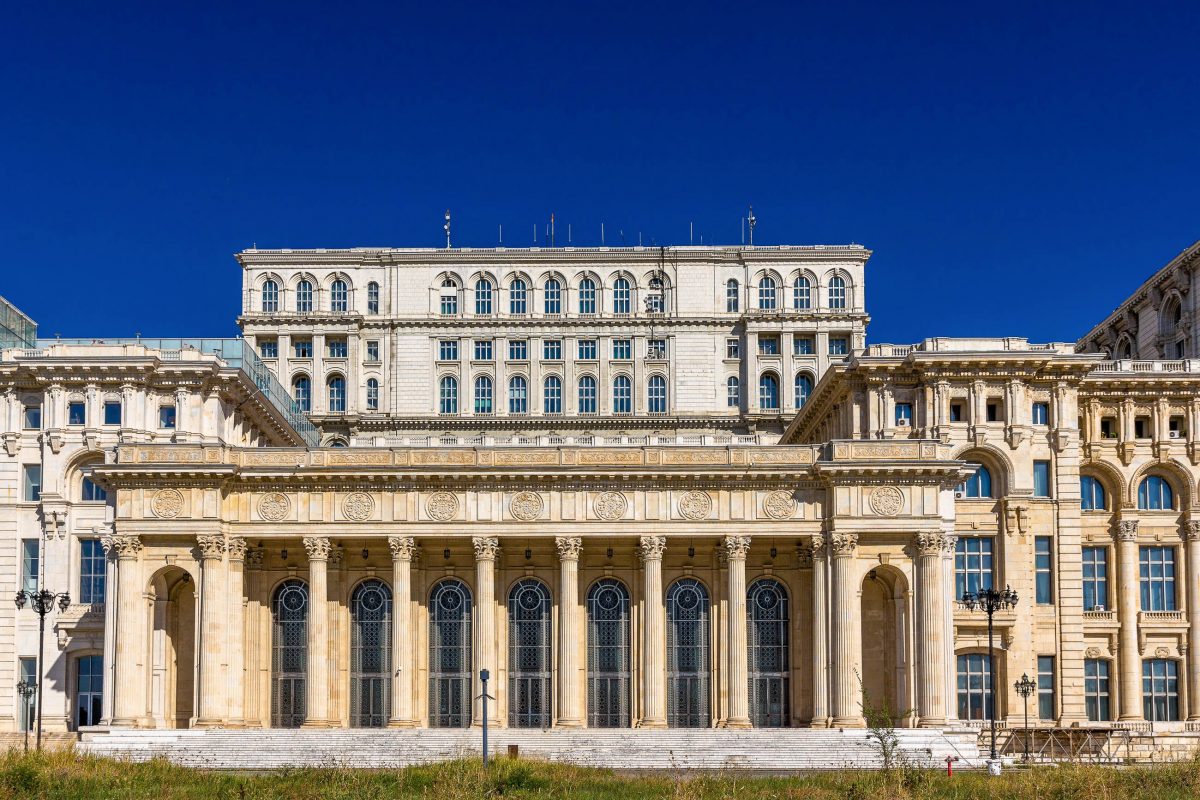
Errichtet wurde der Parlamentspalast unter dem diktatorischen Staatspräsident Nicolae Ceausescu in den 1980er Jahren als „Haus des Volkes“. Er wollte darin seine gesamte Regierung vereinen und für sich selbst eine Residenz schaffen. Eine gewisse Ähnlichkeit mit dem französischen Schloss Versailles in Paris ist dabei nicht zu übersehen.
Den Ausschreibungswettbewerb für den Entwurf des Parlaments gewann die damals erst 26jährige Anca Petrescu kurz nach Abschluss ihres Architekturstudiums. Dem gigantischen Vorhaben mussten Ende der 1970er-Jahre Wohnhäuser mit rund 40.000 Wohnungen, über 20 Kirchen und sechs Synagogen weichen. Das historische Kloster Mihai Voda aus dem 16. Jahrhundert wurde nach weltweitem Protest nicht abgerissen, sondern nur einige hundert Meter verlegt.
Spatenstich und Baustopp durch Hinrichtung
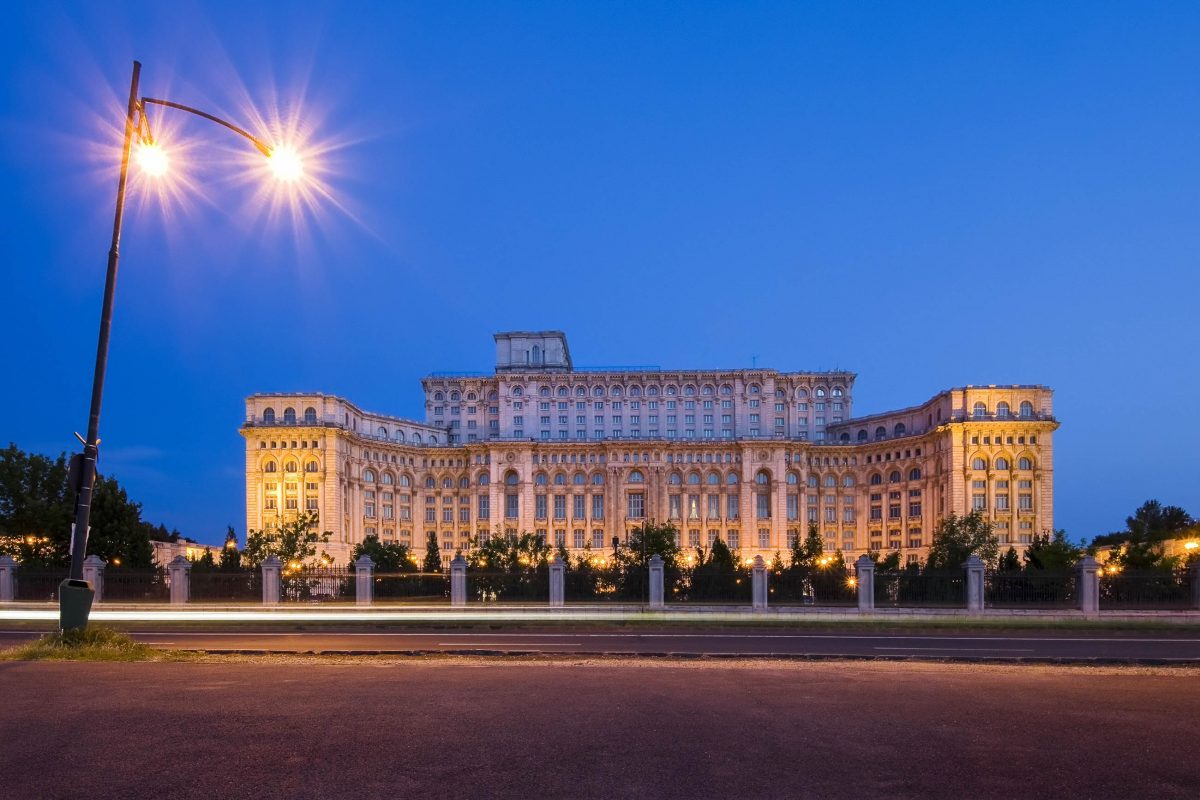
Im Juni 1984 begann der Bau des gewaltigen Palastes auf dem als erdbebensicher geltenden Arsenalhügel. Aus Anweisung Ceausescus wurden nur heimische Materialien verwendet. Marmor aus Siebenbürgen, Kirsch- und Walnussholz, Kristall, Bronze, Gold und Silber sorgten für die prunkvolle Innenausstattung.
Das Parlament wird dem Stil des Neoklassizismus zugerechnet, obwohl es mit andern neoklassizistischen Bauten kaum vergleichbar ist. 20.000 Arbeiter und 700 Architekten waren fünf Jahre lange rund um die Uhr mit seiner Fertigstellung beschäftigt. Dass das Volk hungern musste, um die astronomischen Baukosten zu finanzieren, kümmerte den Diktator wenig.
Nach der politischen Wende und der Hinrichtung des Staatspräsidenten im Jahr 1989 überlegte man, was man mit der Machtdemonstration Ceausescus anfangen sollte. Der sarkastisch „Haus des Sieges über das Volk“ genannte Prachtbau durfte bestehen bleiben, wurde jedoch in „Palast des Parlamentes“ („Palatul Parlamentului“) umbenannt und teilweise nicht fertiggestellt.
Der Parlamentspalast heute
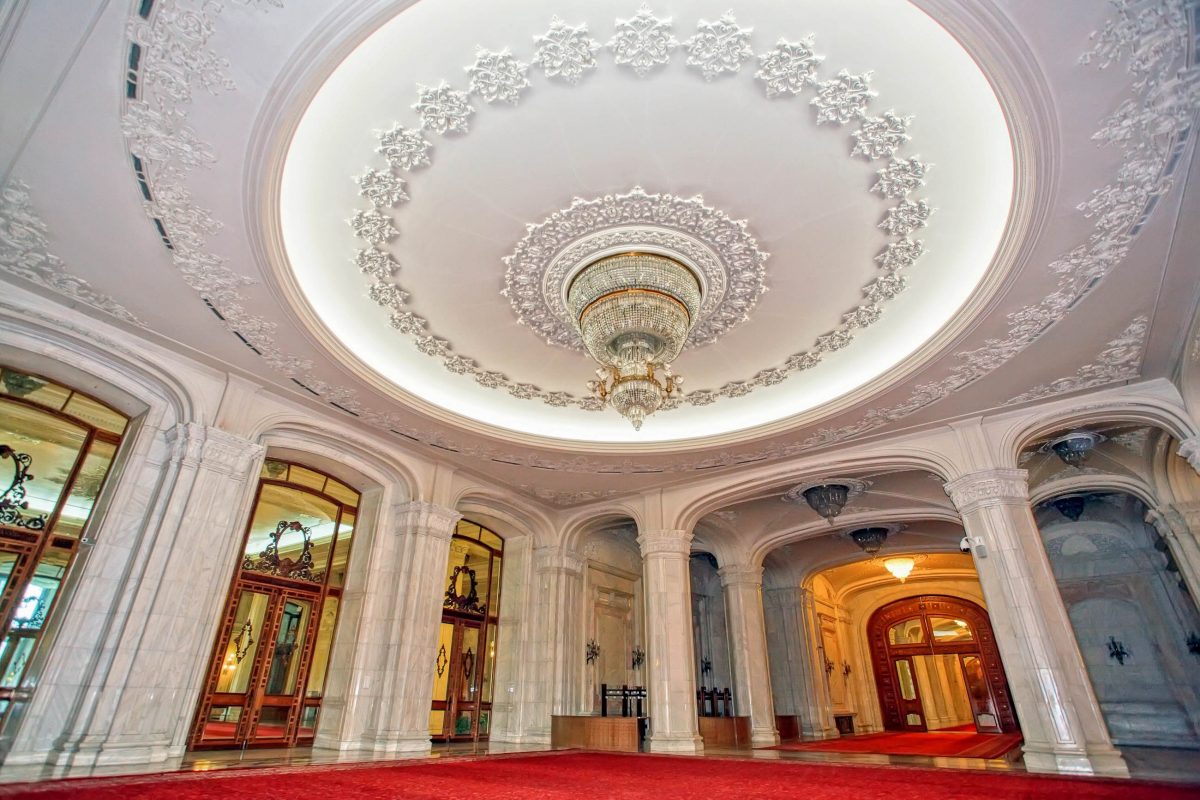
Durch die fehlende Möblierung gibt es viel leeren Raum im Palast und manche Stockwerke sind immer noch in Arbeit. Heute dient der Parlamentspalast als Sitz der Abgeordnetenkammer und des Senats. Die Rückseite des gewaltigen Gebäudes beherbergt seit 2004 das rumänische Nationalmuseum für Moderne Kunst sowie Museum und Park des Totalitarismus und des sozialen Realismus.
Internationale Aufmerksamkeit erhielt der Parlamentspalast in Bukarest im April 2008, als er als Veranstaltungsort für die Parlamentarische Versammlung der NATO fungierte.
Monströse Ausmaße des Parlamentspalastes
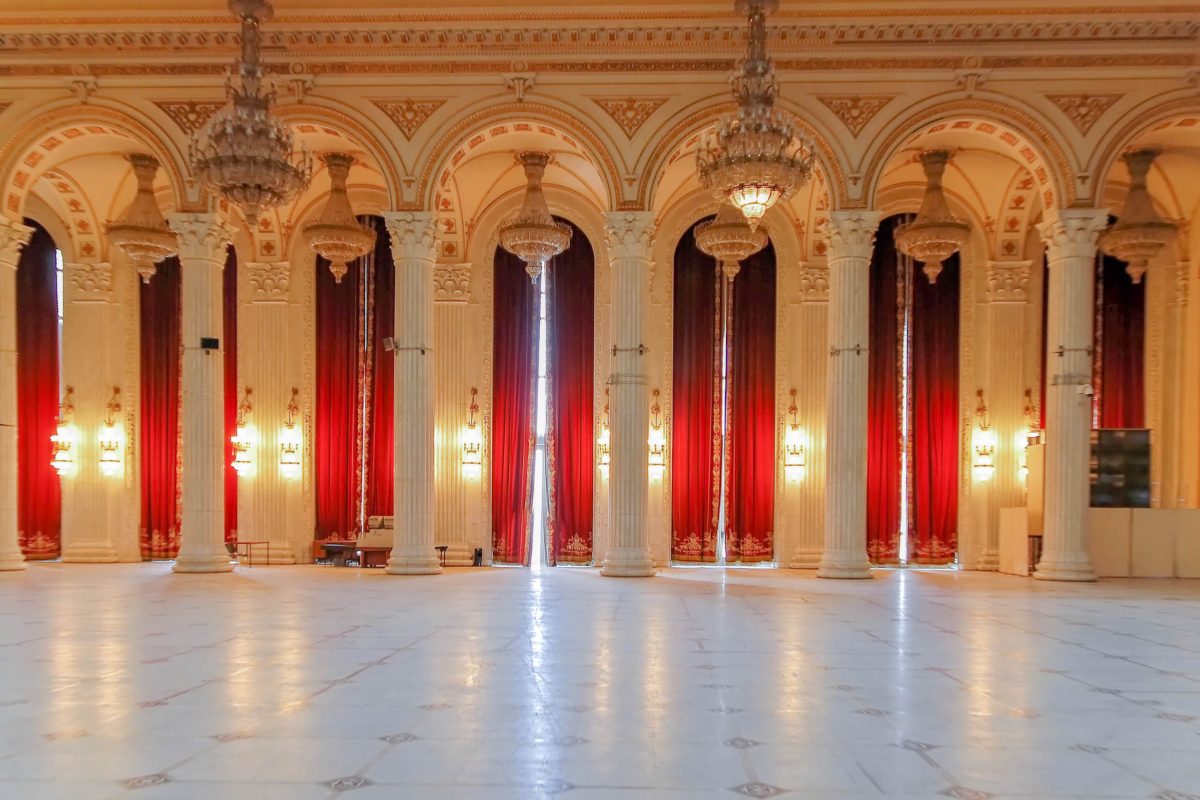
Die Ausmaße des Parlamentspalastes sind schier atemberaubend und sprengen alles jemals da Gewesene. Sein prachtvolles äußeres Erscheinungsbild, das vor allem das Nachts einen unvergesslichen Anblick bietet, setzt sich im Prunk in seinem Inneren fort.
Marmorne Treppen und Säulen, kostbare tonnenschwere Teppiche, gigantische Kristalllüster, atemberaubend geschmückte Säle, Brokat- und Samtvorhänge mit Gold und Silber bestickt und weitläufige Korridore unterstreichen die Aussage des britischen Historikers Tony Judt, der Parlamentspalast sei „eine monströse Metapher für maßlose Tyrannei“.
Besuch im Parlamentspalast von Bukarest
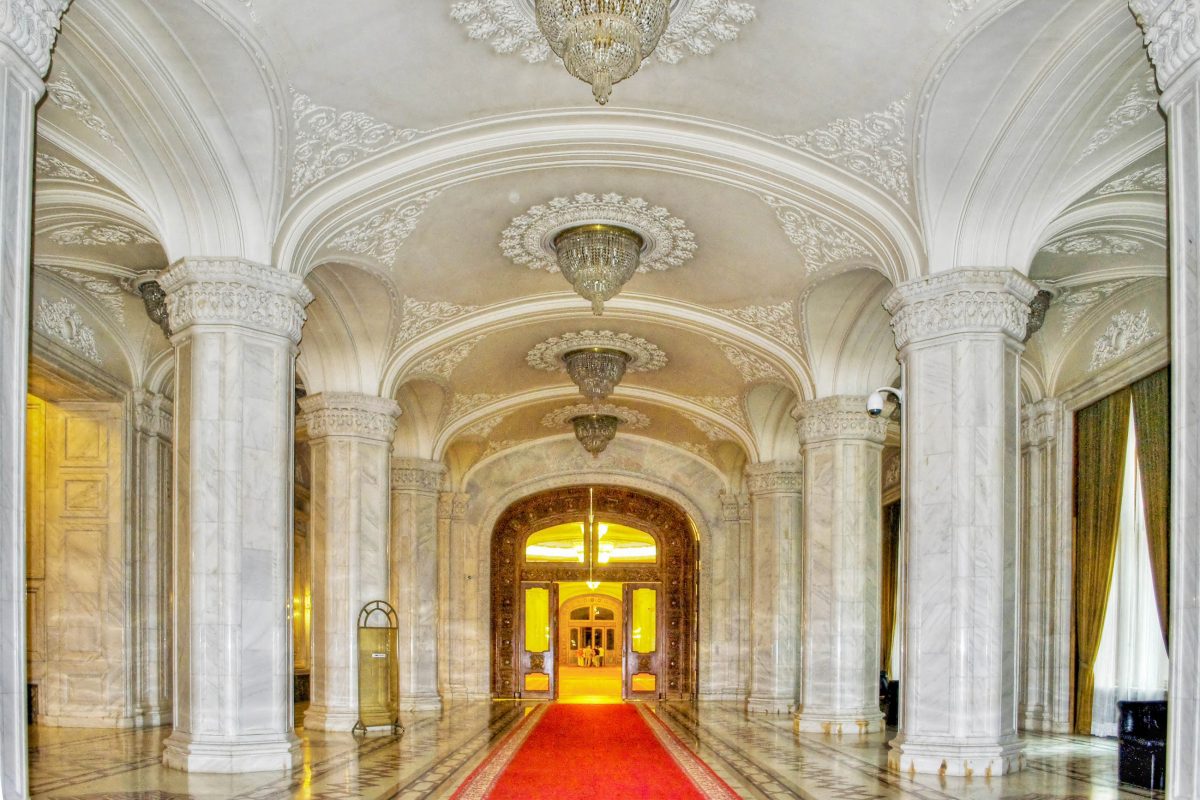
Der Parlamentspalast ist schon von außen eindrucksvoll anzuschauen, doch eine Führung durch sein Innenleben ist nach Voranmeldung möglich (Reisepass mitnehmen!). Besichtigungstouren brauchen ihre Zeit und dauern zwischen zwei und drei Stunden. Sie führen durch die schönsten Galerien und Säle sowie auf den Balkon des Palastes. Am Schluss sollte man auch noch ein wenig Zeit für die Souvenirshops und Kunstausstellungen haben.
Tipp: Wer für einen Besuch die Sommerzeit wählt, kann auch anschließend in den angrenzenden Parks und über die prächtigen Boulevards flanieren, die zum Arsenalhügel führen.
Fakten zum Parlamentspalast in Bukarest
| Länge: 275 Meter |
| Breite: 235 Meter |
| Höhe: 86 Meter |
| Grundfläche: 65.000 Quadratmeter |
| Palastareal: 365.000 Quadratmeter |
| Höhe des größten Saals: 16 Meter |
| Fläche des größten Saals: 2.200 Quadratmeter |
| Längste Galerie: 150 Meter |
| Geschätzte Baukosten: 3,3 Milliarden Euro (40% des rumänischen Bruttosozialproduktes) |
| Jährliche Stromrechnung: knapp 2 Millionen Euro |
| 5.100 Räume, davon 30 Konferenzsäle |
| 12 Stockwerke, 4 davon unterirdisch |
| 200 Toiletten |
| 31 Aufzüge |
| 480 Kristalllüster |
| 2.000 Kilometer elektrische Leitungen |
| 170 Techniker |
Weiterführende Links:
Öffnungszeiten und Eintrittspreise in den Parlamentspalast in Bukarest
Artikel über den Bau des Parlamentspalasts in Bukarest und seine Architektin





